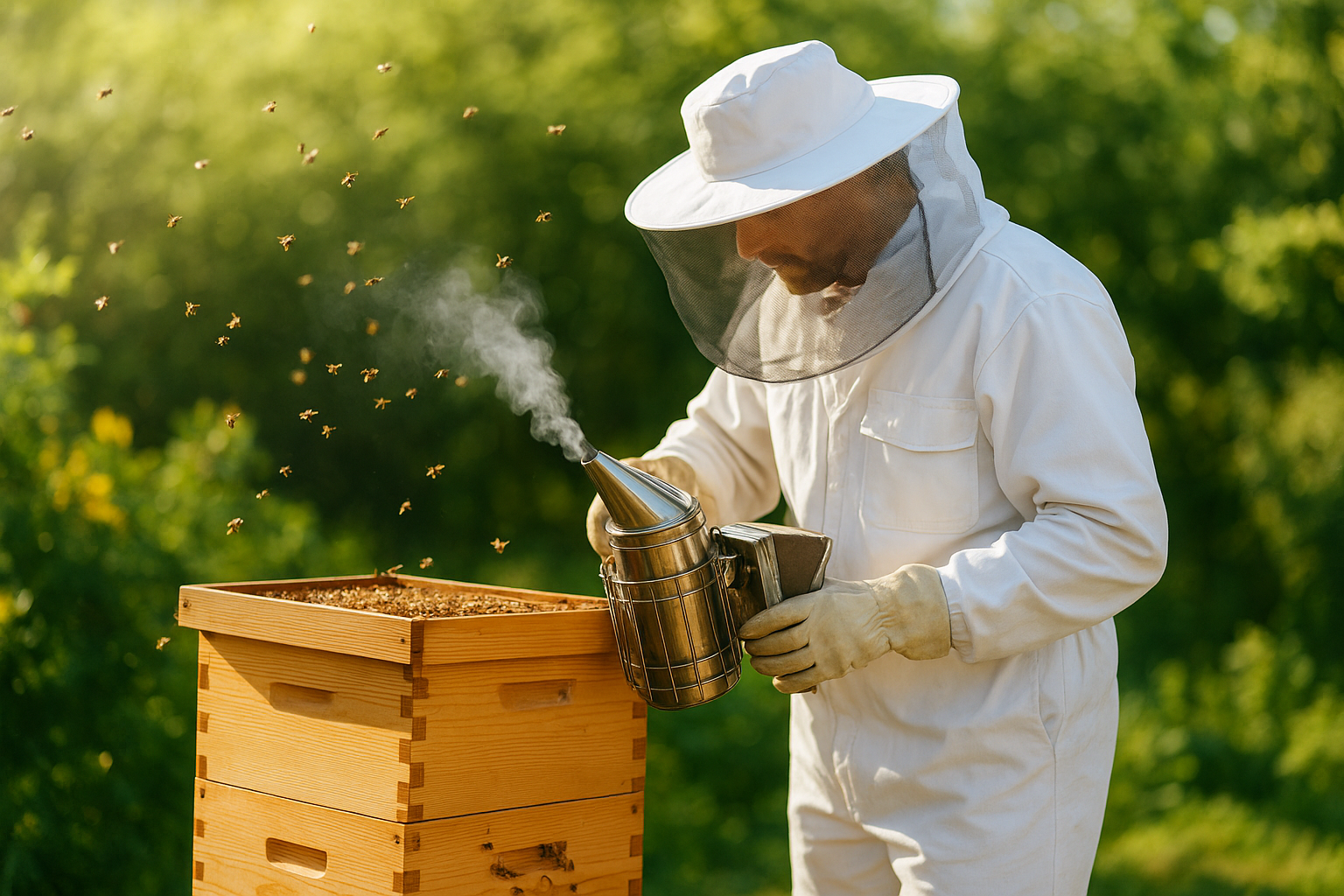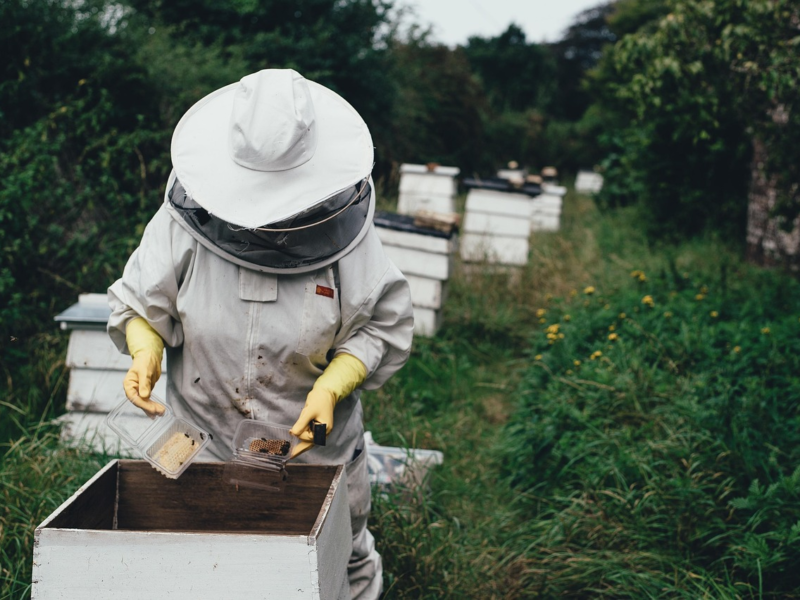Introduction
Beekeeping, often called apiculture, is more than just keeping bees for honey production. It’s an ancient practice that contributes to pollination, biodiversity, and sustainable agriculture. Whether you’re a beginner curious about starting your first hive or a professional beekeeper expanding your operation, choosing the right beekeeping equipment is crucial for success.
In this detailed guide, we’ll cover:
- The essential beekeeping equipment every beekeeper needs.
- Detailed reviews of popular products.
- Tips on how to choose quality gear without overspending.
- Recommendations for beginners vs. advanced beekeepers.
This article is designed to help you make informed decisions before investing in tools and gear.
1. Essential Beekeeping Equipment
Before diving into reviews, let’s look at the core equipment you’ll need for beekeeping.
🐝 1.1 Bee Hive
The beehive is the heart of your operation.
- Langstroth Hive – The most popular choice worldwide, easy to maintain, with removable frames.
- Top Bar Hive – Natural beekeeping style, suitable for small-scale keepers.
- Warre Hive – Vertical hive designed to mimic natural colonies.
👉 Recommendation: Beginners should start with a Langstroth hive due to its simplicity and availability of spare parts.
🐝 1.2 Protective Clothing
Bees are generally not aggressive, but protection is essential.
- Bee Suit – Full-body suit offering maximum protection.
- Bee Jacket – Lighter option for experienced beekeepers.
- Gloves – Leather or nitrile for handling bees safely.
- Veil – Protects face and neck from stings.
👉 Tip: Choose light-colored suits since bees are less aggressive toward white or light shades.
🐝 1.3 Smoker
A smoker calms bees by masking alarm pheromones.
- Stainless steel smoker – Durable, easy to clean.
- Smaller smokers – Best for backyard beekeeping.
- Electric smokers – High-tech option for larger apiaries.
👉 Review Insight: Traditional stainless steel smokers remain the most reliable choice.
🐝 1.4 Hive Tool
The “Swiss Army knife” of beekeeping.
- Standard hive tool – Flat blade, used for prying open hives.
- J-hook hive tool – Great for lifting frames without damage.
- Multi-purpose tools – Combine scraper, pry bar, and hook.
👉 Best for Beginners: J-hook hive tool for versatility.
🐝 1.5 Beekeeping Brush
Soft-bristled brush used to gently move bees from frames during inspection.
🐝 1.6 Feeders
Used to supplement bees during nectar shortages.
- Entrance feeder – Easy to install, ideal for beginners.
- Top feeders – Larger capacity for bigger colonies.
- Frame feeders – Placed inside the hive.
🐝 1.7 Queen Excluder
A grid placed between brood box and honey supers to prevent the queen from laying eggs in honey frames.
🐝 1.8 Honey Extraction Tools
Harvesting honey requires specialized tools:
- Manual honey extractor – Budget-friendly, hand-crank system.
- Electric honey extractor – Faster, ideal for larger apiaries.
- Uncapping knife or fork – Removes wax caps from honeycomb.
2. Detailed Reviews of Beekeeping Equipment
Now that we’ve outlined the essentials, let’s dive into product reviews.
🔍 2.1 Best Beehives
Mann Lake Complete Beehive Kit
- ✅ Pre-assembled, durable wood.
- ✅ Includes frames and foundation.
- ❌ Slightly more expensive than DIY kits.
👉 Best for beginners starting small.
Flow Hive 2
- ✅ Innovative honey harvesting system.
- ✅ Minimal disturbance to bees.
- ❌ Very expensive compared to traditional hives.
👉 Ideal for hobbyists who value convenience.
🔍 2.2 Best Protective Clothing
Humble Bee 410 Polycotton Suit
- ✅ Excellent ventilation.
- ✅ Reinforced knees and elastic cuffs.
- ❌ Premium price.
👉 Great balance of comfort and safety.
Forest Beekeeping Jacket with Veil
- ✅ Lightweight.
- ✅ Budget-friendly.
- ❌ Less protection than a full suit.
👉 Suitable for warm climates or quick inspections.
🔍 2.3 Best Smokers
VIVO Stainless Steel Smoker
- ✅ Affordable and reliable.
- ✅ Heat shield for safety.
- ❌ Smaller fuel capacity.
👉 Perfect for backyard keepers.
Dadant Jumbo Smoker
- ✅ Large fuel chamber, ideal for big colonies.
- ❌ Heavy to carry.
👉 Best for professional apiaries.
🔍 2.4 Best Hive Tools
J-hook Hive Tool (Heavy Duty Steel)
- ✅ Sturdy and versatile.
- ✅ Comfortable grip.
👉 Highly recommended for all levels.
🔍 2.5 Best Honey Extractors
VEVOR 3-Frame Manual Extractor
- ✅ Affordable.
- ✅ Stainless steel construction.
- ❌ Manual labor required.
👉 Good entry-level choice.
GOODLAND Bee Supply 2-Frame Electric Extractor
- ✅ Faster extraction.
- ✅ Saves time.
- ❌ Higher upfront cost.
👉 Best for serious hobbyists.
3. Beginner vs. Professional Equipment
| Level | Recommended Gear | Investment |
|---|---|---|
| Beginner | Langstroth hive, bee suit, smoker, hive tool, feeder | $300–500 |
| Intermediate | 2–3 hives, honey extractor, protective gear upgrades | $700–1500 |
| Professional | 10+ hives, electric extractors, large smokers, advanced gear | $3000+ |
4. Tips for Choosing Beekeeping Equipment
- Start small – Don’t overspend before gaining experience.
- Focus on quality – Durable stainless steel tools last longer.
- Buy from trusted suppliers – Ensure replacement parts are available.
- Consider local climate – Ventilated suits for hot areas, insulated for colder regions.
5. Maintenance & Longevity
- Clean smokers and hive tools after each use.
- Store bee suits in dry areas.
- Paint or seal wooden hives to protect against weather.
- Regularly inspect extractors for rust or damage.
Conclusion
Beekeeping is both rewarding and challenging, but having the right equipment makes the journey smoother and more successful. From hives and suits to smokers and extractors, investing wisely in tools ensures healthier bees, safer handling, and higher honey yields.
Whether you’re a beginner buying your first kit or a professional expanding your apiary, this guide provides the reviews and insights you need to choose the best beekeeping equipment.



